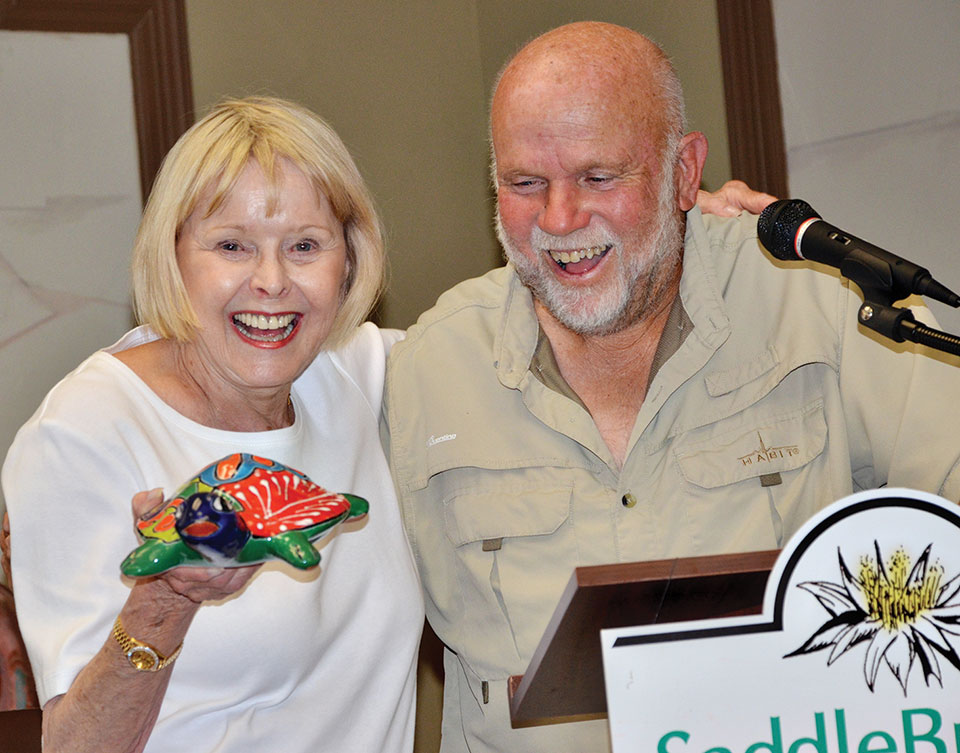
Karen Skaff and Jim Cloer; photo by Ed Skaff
Pam Boedeker
SaddleBrooke Nature Club was pleased to present our own beloved resident naturalist, Jim Cloer, for the last meeting of the season.
Jim’s credentials would fill a page of this newspaper; however, on this particular evening it was his post-graduate work studying turtles that had our attention.
There are some 300 species of turtles around the world—they have existed over 230 million years—even before dinosaurs!
Turtle is a general term that can describe all of these reptiles. Most of the time the term turtle is used to refer to sea and fresh water turtles. Tortoise is the term used to identify dry land turtles that walk with clubbed feet. Here in the U.S. the name Terrapin is used to reference the turtles which exist in the brackish waters of Florida, North and South Carolina. They were thought to be the most edible turtles, even considered a delicacy, by wealthy people long ago. Today there is little demand for turtle soups or stews. In fact, many turtles are on the endangered list and cannot be killed.
Here in Arizona we are most familiar with the Sonoran Desert Tortoise.
(There is an Agave Desert Tortoise in the northwest corner of the state that looks just like our Sonoran but has different DNA.)
Mud Turtles are rarely seen. Jim found one very small Mud Turtle years ago after it traveled down a wash during a heavy monsoon storm.
Sonoran Desert Box Turtles are rarely seen. They are small and can close up tight to look just like a rock.
Red-eared Sliders were sold in abundance as pets. Some were released into the wild and multiplied. They are considered invasive and illegal to release in some areas of the world. Here in SaddleBrooke there are Red-eared Sliders in our golf course ponds. They can help keep our ponds healthy by eating algae and dead fish.
Some turtles live to be over 100 years old. Research in 2014 found that the tissue and organs of a very old turtle were no different than that of a young turtle! (Here in SaddleBrooke I would think there would be demand for more research on this topic!)
Jim’s true life adventures while searching and studying turtles around the world were the best part of his program. He met John Wayne while looking for turtles in Baja. A sea lion rested her head on his knee while he was photographing turtles in the Galapagos.
Do you want to adopt a Desert Tortoise? The Desert Museum has applications.
Contact Jim if you would be interested in helping with the nature group at Catalina State Park.
Never pick up a turtle. It will be frightened and urinate, thus become dehydrated and die. Call Jim if this would happen. He knows how to safely rehydrate the turtles.
Reserve October 8 for a special SaddleBrooke Nature Club picnic at Oracle State Park. More information will be on the website, saddlebrookenatureclub.com.
